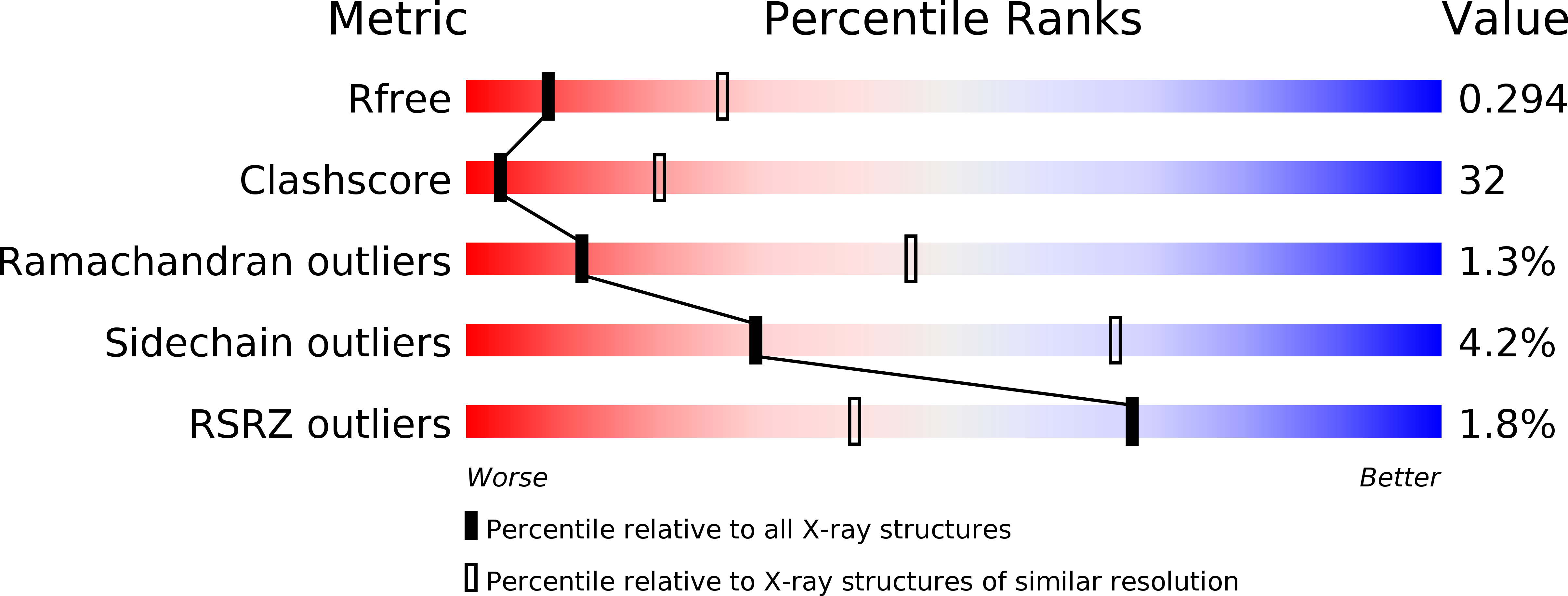VirB11 ATPases are dynamic hexameric assemblies: New insights into bacterial type IV secretion
Savvides, S.N., Yeo, H.J., Beck, M.R., Blaesing, F., Lurz, R., Lanka, E., Buhrdorf, R., Fischer, W., Haas, R., Waksman, G.(2003) EMBO J 22: 1969-1980
- PubMed: 12727865
- DOI: https://doi.org/10.1093/emboj/cdg223
- Primary Citation of Related Structures:
1NLY, 1NLZ, 1OPX - PubMed Abstract:
The coupling of ATP binding/hydrolysis to macromolecular secretion systems is crucial to the pathogenicity of Gram-negative bacteria. We reported previously the structure of the ADP-bound form of the hexameric traffic VirB11 ATPase of the Helicobacter pylori type IV secretion system (named HP0525), and proposed that it functions as a gating molecule at the inner membrane, cycling through closed and open forms regulated by ATP binding/hydrolysis. Here, we combine crystal structures with analytical ultracentrifugation experiments to show that VirB11 ATPases indeed function as dynamic hexameric assemblies. In the absence of nucleotide, the N-terminal domains exhibit a collection of rigid-body conformations. Nucleotide binding 'locks' the hexamer into a symmetric and compact structure. We propose that VirB11s use the mechanical leverage generated by such nucleotide-dependent conformational changes to facilitate the export of substrates or the assembly of the type IV secretion apparatus. Biochemical characterization of mutant forms of HP0525 coupled with electron microscopy and in vivo assays support such hypothesis, and establish the relevance of VirB11s ATPases as drug targets against pathogenic bacteria.
Organizational Affiliation:
Department of Biochemistry and Molecular Biophysics, Washington University School of Medicine, 660 S Euclid Ave, St Louis, MO 63110, USA.















